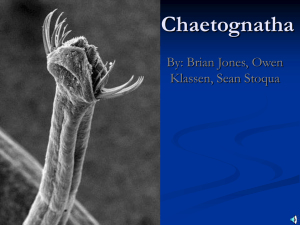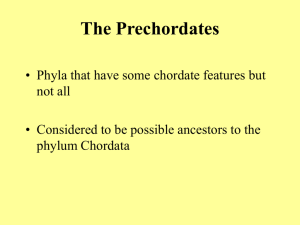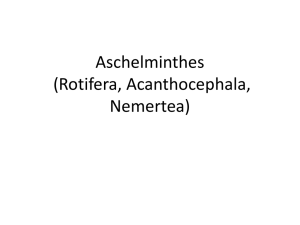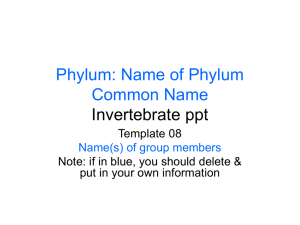Phylum Nemertea & Phylum Chaetognatha Ribbon Worms Arrow Worms
advertisement
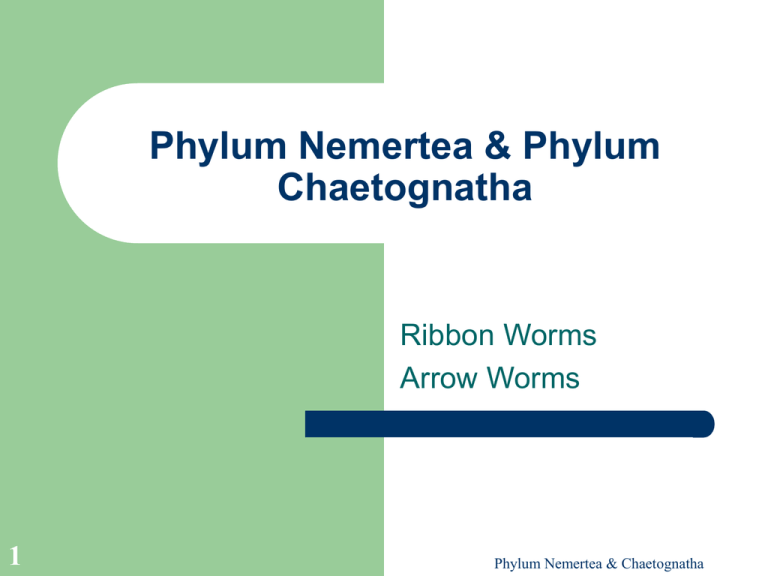
Phylum Nemertea & Phylum Chaetognatha Ribbon Worms Arrow Worms 1 Phylum Nemertea & Chaetognatha Phylum Nemertea 2 Long, slender, soft unsegmented worms with an eversible proboscis Phylum Nemertea & Chaetognatha The Proboscis 3 Phylum Nemertea & Chaetognatha Digestion and Circulatory Systems Lacks an exoskeleton; skin is densely ciliated which circulates water for gas exchange Eyespots are located on the head near the brain Food is digested rapidly and processed in a linear digestive tract 4 Phylum Nemertea & Chaetognatha Reproduction 5 Sexes are separate with fertilization occurring in the water column – Usually solitary animals that aggregate at spawning – Long lived free-swimming larvae pilidium Great powers of regeneration Phylum Nemertea & Chaetognatha Local Representatives 6 Milky ribbon worm (Cerebratulus lacteus) Phylum Nemertea & Chaetognatha Phylum Chaetognatha (Arrow Worms) Defining Characteristics – – 7 A series of curved chitinous grasping spines on both sides of the head, for seizing prey Lateral stabilizing fins Phylum Nemertea & Chaetognatha Chaetognaths Habits 9 Living Chaetognaths are almost invisible in the water Possess two eyes that are useful for sensing motion and light intensity Phylum Nemertea & Chaetognatha Chaetognatha Feeding A prey item is sensed by cilia along the body Feed on copepods, larval crustaceans, young fish and each other Can occur in very high concentrations several hundred per cubic meter Can have substantial effects on eggs and larvae some of which are commercially important 10 Phylum Nemertea & Chaetognatha Reproduction 11 Phylum Nemertea & Chaetognatha
